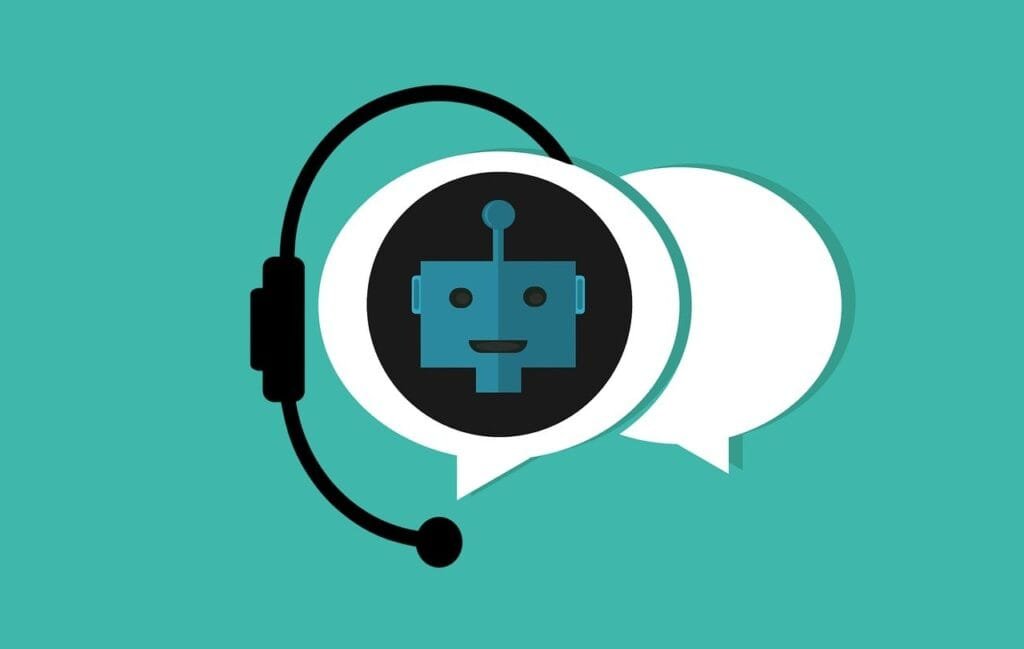In today’s digital age, engaging with your audience remotely has become more important than ever. With many people working from home and socializing online, it’s crucial to find innovative ways to connect with them through social media. This guide will provide you with creative and actionable ideas to enhance remote engagement on your social media platforms. Let’s dive into these strategies and see how you can create meaningful interactions with your audience.
Host Virtual Events

Live Streaming
Live streaming is a powerful tool to engage with your audience in real-time. Platforms like Instagram Live, Facebook Live, and YouTube Live allow you to interact directly with your followers. Host live Q&A sessions, product launches, or behind-the-scenes tours. Encourage viewers to ask questions and interact with you during the stream. This not only provides real-time engagement but also makes your audience feel connected to your brand.
Virtual Workshops
Offer virtual workshops that provide value to your audience. These can be educational sessions, tutorials, or interactive classes related to your industry. For example, if you’re in the fitness industry, you could host a live workout session or a nutrition workshop. Promote these events on your social media channels and use them to showcase your expertise while engaging your followers.
Online Contests and Challenges
Contests and challenges are a great way to boost engagement. Create a fun and interactive challenge that encourages your audience to participate. For example, a photo challenge where followers share their best home office setups or a fitness challenge with daily workout routines. Offer prizes or incentives to increase participation and make sure to highlight user-generated content on your social media platforms.
Strategically Hosting Virtual Events
Plan and Promote Ahead
Start planning and promoting your virtual events well in advance. Use your social media channels to create a buzz about the upcoming event. Share teasers, behind-the-scenes preparations, and countdowns to build anticipation. Make sure to clearly communicate the event details, including the date, time, platform, and how to join. Consistent promotion helps ensure a larger turnout and more engaged participants.
Collaborate with Industry Experts
Enhance the credibility and appeal of your virtual events by collaborating with industry experts. Invite guest speakers who can provide valuable insights and attract their own followers to your event. For example, if you’re hosting a virtual workshop on digital marketing, invite a well-known marketing expert to co-host. Collaborations add value and increase the reach of your event.
Interactive Elements
Incorporate interactive elements to keep your audience engaged throughout the event. Use live polls, Q&A sessions, and real-time feedback to encourage participation. For example, during a live Q&A, use a platform that allows viewers to upvote questions they find interesting. This ensures that the most relevant questions are addressed and keeps the audience involved.
Provide Exclusive Content
Offer exclusive content or perks to attendees of your virtual events. This could include access to special resources, downloadable materials, or discounts on your products or services. Providing exclusive content adds value to your event and incentivizes attendance. For example, attendees of a virtual workshop could receive a free e-book or a discount code for future purchases.
Enhance Engagement During Events
Use Multiple Platforms
Broadcast your virtual events on multiple platforms to reach a wider audience. Use tools like StreamYard or Restream to simultaneously stream your event on Facebook Live, YouTube Live, and LinkedIn Live. This multi-platform approach maximizes your reach and allows you to engage with followers on their preferred social media channels.
Real-Time Social Media Updates
Keep the momentum going by sharing real-time updates on your social media channels during the event. Post highlights, key takeaways, and behind-the-scenes moments on platforms like Twitter, Instagram Stories, and Facebook. Encourage attendees to do the same by using a specific event hashtag. Real-time updates help maintain engagement and create a sense of community among participants.
Engage with Comments and Feedback
Actively monitor and engage with comments and feedback during the event. Assign team members to respond to questions and comments in real-time. This shows your audience that you value their input and are actively listening. For example, if you’re hosting a live cooking demo, have a team member respond to cooking-related questions in the chat.
Post-Event Strategies
Follow-Up Content
Extend the life of your virtual event by creating follow-up content. Share recordings, highlight reels, and key takeaways on your social media channels. This not only reaches those who missed the event but also reinforces the information for attendees. For example, create a blog post summarizing the main points of a virtual workshop and share it across your platforms.
Gather and Analyze Feedback
Collect feedback from attendees to understand what worked well and what could be improved. Use surveys, polls, and social media analytics to gather insights. Analyze this feedback to refine your future virtual events and make them even more engaging. For example, if attendees enjoyed a particular interactive element, make sure to include it in future events.
Maintain Engagement
Keep the conversation going even after the event ends. Encourage attendees to share their experiences and takeaways on social media using the event hashtag. Engage with these posts by liking, commenting, and sharing. This helps maintain engagement and builds a sense of community around your brand.
Innovative Event Ideas
Virtual Networking Events
Host virtual networking events to connect your audience with industry peers. Use breakout rooms and structured networking sessions to facilitate meaningful connections. For example, organize a virtual happy hour where participants can join different breakout rooms based on their interests or industry. Provide conversation starters or icebreakers to help participants engage.
Interactive Product Demos
Conduct interactive product demos to showcase your products in action. Allow participants to ask questions and provide real-time feedback. For example, if you’re launching a new tech gadget, host a live demo where you walk through its features and functionalities. Encourage viewers to ask questions and highlight their feedback during the session.
Virtual Tours
Offer virtual tours of your facilities, events, or behind-the-scenes operations. This can be particularly engaging for businesses with physical locations, like restaurants, factories, or event spaces. For example, a restaurant could offer a virtual tour of their kitchen and explain their cooking process. This type of content provides an immersive experience and builds a deeper connection with your audience.
Create Engaging Content
Interactive Stories
Use Instagram and Facebook Stories to create interactive content. Incorporate features like polls, quizzes, and question stickers to engage your audience. For instance, ask your followers to vote on their favorite products, answer trivia questions, or share their opinions on a topic. Interactive Stories are not only fun but also provide valuable insights into your audience’s preferences.
Behind-the-Scenes Content
People love getting a glimpse behind the curtain. Share behind-the-scenes content of your business operations, product development, or team activities. This type of content humanizes your brand and builds a stronger connection with your audience. Showcasing the people and processes behind your products or services makes your brand more relatable and trustworthy.
User-Generated Content
Encourage your followers to create and share their own content related to your brand. This could be photos, videos, reviews, or testimonials. Feature the best submissions on your social media channels to show appreciation and build a sense of community. User-generated content not only provides you with free content but also acts as social proof, enhancing your brand’s credibility.
Leverage Technology
Strategically Leveraging Advanced Technology
Develop Interactive AR Campaigns
Use AR technology to create interactive campaigns that captivate your audience. For example, develop a filter that lets users visualize your products in their environment, such as furniture in their living room or makeup on their face. Encourage users to share their AR experiences with a branded hashtag to increase user-generated content and engagement. Partner with AR developers if necessary to create high-quality, immersive experiences.
Host VR Launch Events
Host product launch events or demonstrations in virtual reality. This provides an immersive experience for attendees, making them feel like they are part of an exclusive event. Use platforms like Oculus Venues or AltspaceVR to host these events.
Promote the VR launch extensively on your social media channels to build anticipation and ensure high attendance. Follow up with highlights and behind-the-scenes content to keep the momentum going.
AI-Powered Personalization
Utilize AI to personalize the user experience on your social media platforms. AI algorithms can analyze user behavior and preferences to provide tailored content recommendations. For example, an AI-powered chatbot can suggest products based on a user’s browsing history or past interactions. Personalized experiences can significantly enhance user satisfaction and engagement, driving higher conversion rates.
Enhance Customer Support with Chatbots
24/7 Customer Service
Implement chatbots to provide round-the-clock customer service on your social media platforms. This ensures that your customers can get assistance anytime they need it, without having to wait for business hours. Use chatbots to handle common inquiries, process orders, and provide updates on shipping or returns. Ensure that the chatbot can seamlessly hand off more complex queries to a human representative.
Personalized Shopping Assistance
Create a personalized shopping experience with AI-powered chatbots. These chatbots can help customers find products based on their preferences, answer questions about product features, and even suggest complementary items.
For example, if a customer is browsing your online store for running shoes, the chatbot can recommend matching sportswear or accessories. This enhances the shopping experience and increases the likelihood of additional purchases.
Innovative Use of Technology for Engagement
Gamified Experiences
Incorporate gamification into your social media strategy to boost engagement. Develop interactive games or challenges that users can participate in through your social media platforms.
For example, create a branded game where users can earn points or rewards for completing certain tasks, such as sharing content, tagging friends, or making purchases. Use leaderboards and incentives to encourage participation and create a sense of competition.
Automated Content Creation
Leverage AI tools for automated content creation to maintain a consistent posting schedule. Tools like Lumen5 or Copy.ai can help you generate high-quality content quickly and efficiently. For instance, use these tools to create engaging video summaries of your blog posts or generate social media captions. Automated content creation allows you to focus on strategy and engagement while ensuring a steady stream of fresh content.
Voice-Activated Technology
Explore the use of voice-activated technology to engage with your audience in new ways. Develop voice skills for platforms like Amazon Alexa or Google Assistant. These skills can provide users with information about your products, answer FAQs, or even place orders. Promote these voice skills on your social media channels and encourage users to incorporate them into their daily routines.
Measuring and Optimizing Technology Use
Analyze Engagement Metrics
Regularly analyze engagement metrics to understand the impact of your technological initiatives. Use tools like Google Analytics, Facebook Insights, and Instagram Analytics to track metrics such as user interactions, conversion rates, and customer satisfaction. Analyzing these metrics helps you identify what’s working and where improvements are needed, allowing you to optimize your strategy for better results.
Continuous Improvement
Stay updated with the latest technological trends and continuously seek ways to enhance your engagement strategies. Attend industry conferences, participate in webinars, and read industry publications to stay informed about new technologies and best practices. Implementing the latest advancements ensures that your brand remains at the forefront of innovation and continues to captivate your audience.
Secure and Ethical Use of Technology
Data Privacy and Security
Ensure that your use of technology complies with data privacy and security regulations. Implement robust security measures to protect user data and be transparent about how you collect, use, and store this information. Educate your audience about your data privacy practices to build trust and confidence in your brand.
Ethical AI Practices
Use AI and other advanced technologies ethically. Ensure that your AI algorithms are free from biases and provide fair treatment to all users. Regularly audit your AI systems to detect and correct any biases. Ethical use of technology not only builds trust with your audience but also aligns your brand with responsible business practices.

Foster Community Engagement
Virtual Meetups
Organize virtual meetups to bring your community together. These meetups can be informal gatherings, themed discussions, or networking events. Use platforms like Zoom or Google Meet to facilitate these sessions. Promote the meetups on your social media channels and encourage your followers to join. Virtual meetups help build a sense of community and provide a space for your audience to connect with each other and your brand.
Online Book Clubs or Study Groups
Start an online book club or study group related to your industry. Choose a book or set of resources and schedule regular meetings to discuss the material. Use social media to announce the book club, share reading schedules, and engage with participants. This type of content fosters a learning community and positions your brand as a thought leader in your industry.
Interactive Webinars
Host interactive webinars that provide valuable information and encourage audience participation. Choose topics that are relevant and useful to your followers. Include Q&A sessions, live polls, and interactive discussions to keep the audience engaged. Promote these webinars through your social media channels, and provide downloadable resources or follow-up content to extend the value.
Collaborate with Influencers
Influencer Takeovers
Invite influencers to take over your social media accounts for a day. Influencers can share their own content, engage with your audience, and provide a fresh perspective. Choose influencers who align with your brand values and have a following that overlaps with your target audience. Influencer takeovers can boost engagement, reach new followers, and add variety to your content.
Joint Live Sessions
Collaborate with influencers or industry experts for joint live sessions. These can be interviews, panel discussions, or collaborative tutorials. Promote the sessions across both your channels and the influencer’s channels to maximize reach. Joint live sessions provide valuable content, introduce your brand to new audiences, and create opportunities for meaningful interactions.
Social Media Challenges with Influencers
Partner with influencers to create social media challenges. These challenges can be related to your products, services, or industry trends. Influencers can promote the challenge to their followers, encouraging wider participation. For example, a fitness influencer might promote a 30-day workout challenge featuring your fitness products. This collaboration not only drives engagement but also leverages the influencer’s credibility to enhance your brand.
Utilize Gamification
Online Trivia Games
Create online trivia games related to your industry or brand. Use platforms like Kahoot! or Quizizz to design and host these games. Promote the trivia sessions on your social media channels and encourage followers to join. Offer prizes or incentives for top performers to increase participation. Trivia games are fun, educational, and highly engaging.
Interactive Story Games
Develop interactive story games where followers make choices that affect the outcome. These can be simple text-based games or more complex interactive videos. Use platforms like Instagram Stories or Facebook Messenger to deliver these experiences. Interactive story games engage your audience by involving them in the narrative and making them feel part of the brand story.
Virtual Scavenger Hunts
Organize virtual scavenger hunts where participants search for clues hidden in your social media posts or website. Provide hints and riddles that lead to different locations or pieces of content. This type of gamification encourages deep engagement with your content as followers explore different parts of your digital presence. Offer rewards for those who complete the hunt to motivate participation.
Strategically Implementing Gamification
Define Clear Objectives
Before implementing gamification, define clear objectives for what you want to achieve. Whether it’s increasing engagement, driving traffic, or educating your audience, having a clear goal will help you design the most effective game. For example, if your goal is to increase product knowledge, a trivia game with questions about your products can be highly effective.
Align with Brand Identity
Ensure that your gamification efforts align with your brand identity and values. The design, tone, and content of your games should reflect your brand’s personality. For instance, if your brand is known for being fun and playful, your games should have a light-hearted and entertaining feel. Consistency in branding helps reinforce your identity and makes the experience more memorable for your audience.
Encourage User-Generated Content
Leverage gamification to encourage user-generated content. Create challenges that require participants to create and share their own content, such as photos, videos, or stories. Feature the best submissions on your social media channels to highlight your community and foster a sense of participation. For example, a photo contest where users share images of themselves using your product can generate a wealth of engaging content.
Enhance Engagement with Gamified Campaigns
Points and Rewards System
Implement a points and rewards system to encourage ongoing participation. Assign points for various actions, such as sharing content, tagging friends, or completing challenges. Offer rewards such as discounts, exclusive access, or physical prizes for reaching certain point thresholds. This system not only motivates participation but also fosters loyalty and repeat engagement.
Leaderboards and Competitions
Introduce leaderboards to create a sense of competition and urgency. Display the top participants and update the leaderboard regularly to encourage continued engagement. Competitions with clear rules and attractive prizes can drive significant interest and participation. For example, a month-long fitness challenge with weekly leaderboard updates can keep participants motivated and engaged.
Time-Limited Challenges
Create time-limited challenges to create a sense of urgency and excitement. Limited-time events encourage quick participation and can significantly boost engagement within a short period. Promote these challenges extensively on your social media channels to ensure maximum participation. For example, a 24-hour flash scavenger hunt with a special prize can generate a flurry of activity and excitement.
Innovative Gamification Ideas
Virtual Escape Rooms
Design virtual escape rooms that challenge participants to solve puzzles and riddles to “escape” within a set time. Use a combination of social media posts, website pages, and interactive elements to create the experience. Virtual escape rooms are engaging and can be themed around your brand or products. Promote the event and provide clues across your social media channels to keep participants engaged.
Augmented Reality (AR) Games
Leverage AR technology to create immersive and interactive games. Develop AR experiences that allow users to interact with virtual objects in their real environment. For example, create an AR treasure hunt where users find and collect virtual items hidden around their home or city. AR games provide a unique and engaging experience that can significantly boost brand engagement.
Loyalty Programs with Gamified Elements
Integrate gamification into your loyalty programs to increase customer retention and engagement. Create a system where customers earn points for purchases, social media interactions, and other actions. Offer badges, levels, and rewards to incentivize continued participation. For example, a coffee shop could offer a digital loyalty card where customers earn points for each purchase and unlock rewards at different levels.
Measuring and Optimizing Gamification Efforts
Track Key Metrics
Monitor key metrics to evaluate the success of your gamification efforts. Track engagement rates, participation levels, user-generated content, and overall reach. Use analytics tools to gather data and gain insights into what works and what doesn’t. Regularly review these metrics to refine and improve your gamification strategy.
Collect Feedback
Gather feedback from participants to understand their experiences and identify areas for improvement. Use surveys, polls, and social media interactions to collect feedback. Analyze this feedback to enhance future gamification initiatives and ensure they meet the needs and preferences of your audience.
Continuous Innovation
Stay ahead of the curve by continuously innovating and experimenting with new gamification ideas. Keep an eye on industry trends and competitor strategies to identify opportunities for improvement. Regularly introduce new games, challenges, and interactive elements to keep your audience engaged and excited.
Enhance Visual Content

High-Quality Video Content
Invest in high-quality video content to capture your audience’s attention. Videos are highly engaging and can convey a lot of information quickly. Create a mix of content types, including tutorials, behind-the-scenes looks, product demos, and customer testimonials. Use social media platforms like YouTube, Instagram, and Facebook to share your videos and drive engagement.
Instagram Reels and TikTok
Leverage the popularity of short-form video platforms like Instagram Reels and TikTok. Create entertaining and informative short videos that align with current trends. Use these platforms to reach younger audiences and showcase your brand’s personality. Experiment with different formats, such as challenges, duets, and behind-the-scenes clips, to keep your content fresh and engaging.
Visually Appealing Graphics and Infographics
Design visually appealing graphics and infographics that provide valuable information in an easily digestible format. Use tools like Canva or Adobe Spark to create professional-looking visuals. Share these graphics on your social media channels to educate and engage your audience. Infographics are particularly effective for explaining complex topics, presenting data, or summarizing key points.
Conclusion
Innovative virtual social media ideas are essential for engaging with your audience remotely and fostering meaningful connections. By hosting virtual events, leveraging technology, and utilizing gamification, you can create a dynamic and interactive social media presence that stands out. These strategies not only boost engagement but also provide valuable insights into your audience’s preferences and behaviors.
For startup founders, these approaches offer strategic and actionable ways to build a strong online community, drive traffic, and enhance customer loyalty. By planning ahead, collaborating with experts, and continuously innovating, you can ensure that your social media content remains fresh, engaging, and aligned with your brand’s identity.
Read Next:





















